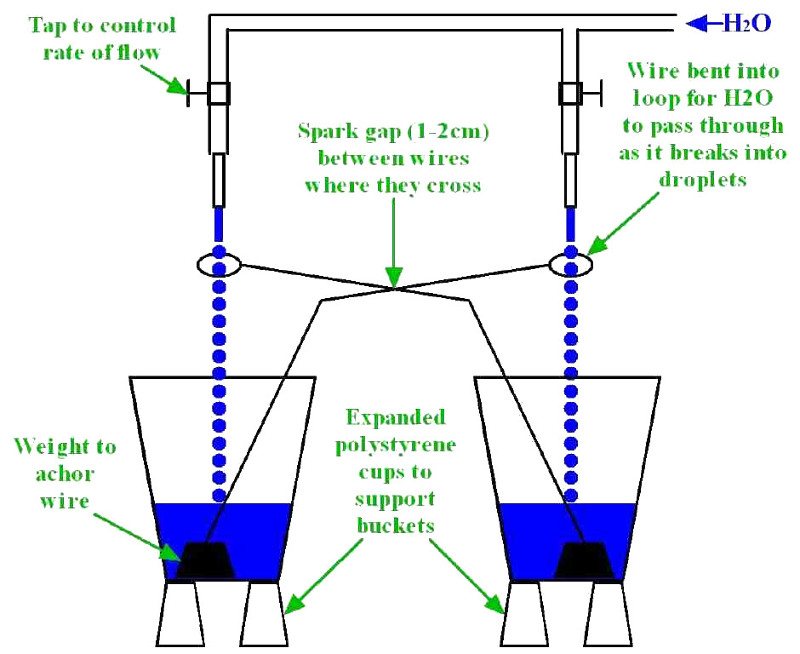


One day in 1976, I (Wayne Plummer) and some school-chums were poking around in an old pile of magazines on top of a cupboard in the Physics Department at Exeter School and we found a description of a fascinating sounding experiment called the "Sparking buckets". We showed this to our Physics Teacher who said it did look interesting, but that these things almost always turned out to be disappointing.
Luckily, he didn't put us off and we proceeded to try it - it was a great success; here's how it goes:
You will need.
This is how you put all the ingredients together:
Wait for the fun to begin!
The following diagram shows how it's all set up:

The fact that the buckets are standing on good insulators means that one is almost certain to be more negatively charged than the other.
This means that the wire in that bucket, with its loop over the opposite bucket, will tend to repel electrons in the water back up towards the water source, i.e. to make it more positively charged.
When this water breaks into droplets, this positive charge is trapped in the water and falls into the opposite bucket, making it more positively charged.
The positively charged bucket's wire, with its loop over our first bucket will be attracting electrons from the water source into the water passing through that loop, i.e. making it more negatively charged.
When this water falls into the first bucket - it further increases the negative charge we started with.
The positive feedback loop continues apace!
As things start to heat up, newly created droplets find themselves heading towards a bucket with the same charge as themselves (and in later stages actually start splitting up because their own charge is great enough to overcome the forces keeping the droplet together!) - what you see is the stream of droplets starting to fan out as it falls; some droplets are sufficiently attracted to the loop and wire they just passed through to spiral around that into the bucket with the opposite charge which they find much more attractive!
If things go well and the gap between the two wires isn't too large, you will be rewarded with a good spark after which things quiet down again; the reprieve is only temporary of course because the whole thing starts up again.
With a suitable backdrop and lighting, this experiment can be really beautiful - well worth a go!
The humidity of the atmosphere has a big impact on this experiment, don't bother trying when it's high.
This article was printed from the Bizarre Labs website at bizarrelabs.com